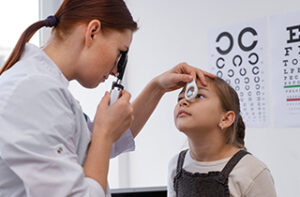Understanding Childhood Strabismus? As a parent, nothing is more precious than the well-being of your child. When it comes to their health, especially their vision, it’s crucial to stay informed and proactive. Childhood strabismus, commonly known as crossed eyes, is a condition that affects the alignment of the eyes and can have a significant impact on a child’s vision and development.
Here at Nishant Taneja‘s practice, we understand the importance of early detection and intervention when it comes to childhood strabismus. As one of the leading eye surgeons in Albania, Dr. Taneja is committed to providing comprehensive care for patients of all ages, including children.
Understanding Childhood Strabismus
Childhood strabismus is characterized by an imbalance in the muscles that control eye movement, resulting in misalignment of the eyes. So, this misalignment can be constant or intermittent and may occur in one or both eyes. It can lead to various vision problems, including double vision, poor depth perception, and amblyopia (lazy eye).
The Importance of Early Detection
Detecting and treating strabismus early is crucial for preventing long-term vision problems and promoting healthy visual development. That’s why routine eye examinations for children are essential. During a comprehensive eye examination, various tests are conducted to assess visual acuity, eye alignment, and overall eye health.
Children’s Eye Examination
At Nishant Taneja’s practice, we prioritize thorough and precise examinations for all our pediatric patients. Our two-hour children’s eye examination includes:
- Assessment of visual acuity at near and far distances
- Tests for strabismus and stereopsis (depth perception)
- Dilatation of pupils and assessment of objective diopter
- Full examination of the anterior and posterior ocular segments
Methods for Assessing Visual Acuity
 The methods for assessing visual acuity vary depending on the age of the child. Evidently, special cards with patterns are often used for infants to determine their visual preferences and compare them with expected developmental milestones.
The methods for assessing visual acuity vary depending on the age of the child. Evidently, special cards with patterns are often used for infants to determine their visual preferences and compare them with expected developmental milestones.
Examination for Strabismus
The examination for strabismus is comprehensive and includes:
- Assessment of visual acuity
- Determination of diopter
- Eye pressure check
- Anterior eye segment examination
- Tear film assessment
- Examination of the optic nerve and retina
Establishing the Orthoptic Status
Examining the orthoptic status is crucial for determining the type of strabismus and measuring the deviation angle. Basically, this involves checking the position, mobility, and cooperation between both eyes. The angle of squinting is measured using prisms in prism diopters (PD) and needs to be evaluated at different distances and in all gaze directions.
Dr. Nishant Taneja for Childhood Strabismus
Childhood strabismus is a common eye condition that requires early detection and intervention. With thorough examinations and advanced treatment options, such as surgery and vision therapy, children with strabismus can achieve optimal visual outcomes and enjoy a bright and clear future.
At Nishant Taneja‘s practice, we are dedicated to providing compassionate and expert care for children with strabismus. If you have any concerns about your child’s vision or eye health, don’t hesitate to schedule an appointment with us. Of course, together, we can ensure that your child sees the world with clarity and confidence.



